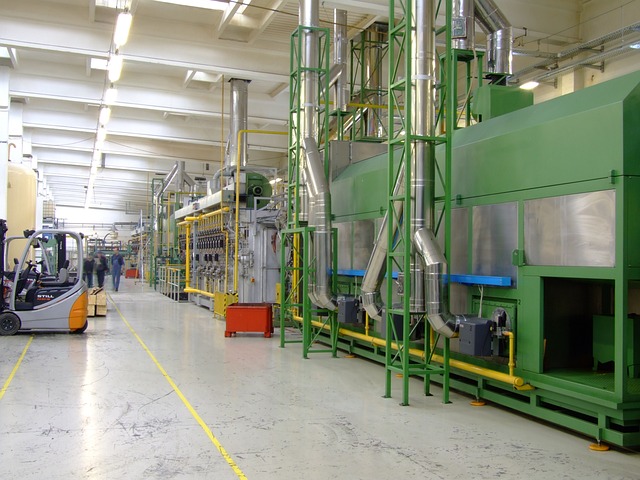- June 21, 2023
- Posted by: David Marshall
- Category: Manufacturing, Productivity, Safety

Your factory’s maintenance program should be ongoing, not as a repair-as-needed reactive process. You need to be as proactive and preventative as possible.
Basically, there are two kinds of maintenance you should be doing: 1) Heavy maintenance and 2) Running maintenance.
- Heavy maintenance:Once a year when you check everything and do all the heavy stuff — things that require you to shut down for 1 – 3 weeks – and replace those moving parts that will shut the entire place down in case of a catastrophic failure.
- Running maintenance:Smaller things like leaks and calibrations that should be done on a day-to-day basis.
 For arguments sake, let’s say a conveyor belt lasts 250,000 revolutions. That will be a heavy repair when it breaks because it can shut down the entire factory, or at least a major portion of it. That’s something you need to keep an eye on and to replace during your heavy maintenance shutdown time, whether it needs it or not.
For arguments sake, let’s say a conveyor belt lasts 250,000 revolutions. That will be a heavy repair when it breaks because it can shut down the entire factory, or at least a major portion of it. That’s something you need to keep an eye on and to replace during your heavy maintenance shutdown time, whether it needs it or not.
Even if you think the belt has 10,000 more revolutions in it, replace it during your annual shutdown cycle, unless you’re prepared to shut down for several days outside of your heavy maintenance shutdown.
An unexpected shutdown could cost millions
There are plenty of companies that will just go and go and go until something breaks, like a conveyor belt. Plenty of companies will let that belt run until it finally breaks and forces them to totally shut down. That’s where you get into a service problem and your entire line could be out for two months.
Can you imagine the losses when you’re not making and shipping products for two months? What if you could have prevented that two-month loss just by taking a week to prevent it?
There are companies that know they should do this, but they don’t. Generally, however, those are companies with very poor service records already. And you can tell them about preventative maintenance until you’re blue in the face, but they won’t change.
You see it every day in the supply chain screwups in your industry. You order a product and it takes forever to get to you, probably because the manufacturer’s equipment wasn’t operating for a while. When that happens to your competitors, it gives you a competitive advantage in the industry, and it’s one you can take advantage of, although you can get hurt by it if you’re not careful.
When your competitor has an outage, raise your prices.
Any time I heard one of my competitors had a major outage, I would immediately raise my prices.
Yes, I did it to make a little more money, but more importantly, we needed to control the demand to keep people from hoarding our products and creating a shortage within the entire industry. Plus, we were going to be making more products, so we had to pay for all the extra materials we needed.
When a competitor has an outage, your demand will go up extraordinarily high and your customers (and your competitors’ customers) can wipe you out, and you won’t have the time to recuperate from that.
If you’re not careful, your new customers will hoard all your inventory because they can’t get it from their own suppliers. That means you won’t be able to fill your current customers’ orders, and they’ll go elsewhere, too. Pretty soon, the competitor will be back online, your new customers will return to the competition, and your old customers may not come back. And then where will you be?
Another scenario is when someone who normally buys 1,000 widgets suddenly buys 3,000 and they don’t need you for two months. You’ll have to idle your equipment and not produce anything until they’ve gone through their inventory.
That’s why you want to control the demand within the sphere of your service. And the best way to do it is by raising prices. The new customers will restrain themselves and keep from hoarding everything.
You can’t rocket your production
Let’s say you’re producing your widgets and suddenly the demand goes up by 50%. You can’t change your production to increase by 50% quickly enough because you likely have capacity restraints. You can do it incrementally, but not 50% all at once.
So, instead you should increase your prices by 10% – 15% to protect yourself from hoarding and ramp up your production to keep up with the increase demand, but be prepared to scale back when the market returns to normal.
This would happen to us at Robroy a couple times each year. A competitor would break down and their customers would start calling us. So we raised prices, controlled the demand, increased our productivity, and then scaled back to normal when the other supplier was back up.
Our associates made more money with the overtime, we made some more money with the additional sales, but most importantly, we didn’t lose a step on our normal productivity.
And because we practiced regular maintenance and performed the heavy maintenance during our annual shutdown, we never had an unexpected breakdown that saw our customers have to go elsewhere for products.
Photo credit: Marcin049 (Pixabay, Creative Commons 0)

